Christmas Is A Claus For Celebration#christmasjoy
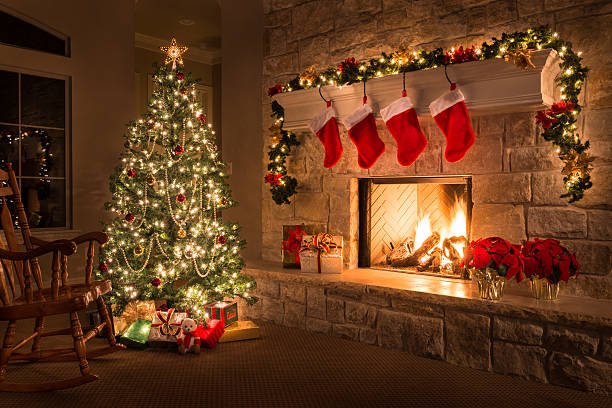
Christmas is a well-known Christian holiday set in December, celebrated worldwide, and famed for its decorations and Santa Clause. Christmas means "Feast day of Christ."It is a yearly celebration marking Jesus Christ's birth; it is observed on December 25 as a cultural and religious celebration among many people worldwide. Christmas is celebrated in all Christian countries, but there are differences in how each nation celebrates this date.

History Behind Christmas:
The middle of winter has long been a time of celebration worldwide. Centuries before the man's arrival called Jesus, early Europeans celebrated light and birth in the darkest days of winter. Many peoples rejoiced during the winter solstice when the worst of the winter was behind them, and they could look forward to longer days and extended hours of sunlight.
The history of Christmas dates back to a very long time; the first Christmas was celebrated in 336 A.D. in Rome. It played a very important role during the famed Arian controversy that took place in the 300s. During the early years of middle age, epiphany overshadowed it.
Christmas was brought back to the limelight around 800 A.D. when the emperor Charlemagne received the crown on Christmas day. During the 17th century, the Puritans had Christmas banned because it was associated with drunkenness and different other misbehavior.
It was made a proper holiday around 1660 but was still quite disreputable. Around the early 1900s, the Oxford movement of the Anglican Communion church started, leading to the revival of Christmas.

The Origin of Christmas Eve:
For centuries, Christmas was celebrated not as a single day but as a whole season in parts of the world, beginning with this day, December 24, Christmas Eve. Perhaps the practice of celebrating the evening before the big day is an echo of ancient Jewish reckoning. Among earlier Jews, a day began at six in the evening and ran until six the following evening. Had not Moses written: "An evening and a morning were the first days"?
.jpg)
.jpg)
The Christian Meaning Behind Ancient Traditions:
Evergreen Trees were the symbol of eternal life. Martin Luther introduced them to the Reformation Church as a picture of our endless life in Christ by bringing in a tree to his family on Christmas Eve lit with candles.
Candles are a picture that Christ is the highlight of the world.
Holly speaks of the thorns in His crown.
Red is a color of Christmas that speaks of Christ's blood and death.
Gifts are a reminder of the gifts of the Magi to baby Jesus. Each of them speaks to a component of His incarnation: Majesty in life, Bitterest Agony in Death, and He as God's Perfect gift to us.
The Yule Log was a symbol by which all the men in the family would carry a log large enough to burn for 12 days into the house. They were identifying with Christ and His Cross. The fire was started with a fragment from the previous years [this refers to the eternal existence of Christ before His birth] log. It speaks of warmth, unity, joy, and the security of endless life.
A mistletoe was an ancient symbol from Roman times. It was under the mistletoe that re restored old enmities and a broken friendship. So Christ was the one who took away the enmity and gave us peace with God.
Bells are associated with ringing out the news. Christ is the good news, the best news of all.
.jpg)

Modern Traditions:
In 1822, Clement Moore wrote a poem for children that has never been forgotten. It was entitled, "Twas the Night before Christmas..."!
Santa Claus is a Dutch word that is Sinter Claus, Saint Nicholas, in English.
Saint Nicholas was the supposed early Bishop of a church in Asia Minor [the modern country of Turkey]. He became aware of some desperate needs in his congregation and a family having to sell their children into slavery, so he came and left money on their doorstep one night. It was gold in a stocking.






Cards And Presents:
The giving of gifts at Christmas comes from several different ideas. One is that God gave his Son, Jesus, to the world at Christmas. There is also the story of the Wise Men who came to the baby Jesus with three gifts, gold, frankincense, and myrrh. For many centuries it has been the custom for people to give small gifts at Christmas and also to give generously to the poor and needy to help them through the winter. Another tradition has become linked to this one. The result is the tradition of Santa Claus, or Father Christmas as he is sometimes called, and who is nowadays thought by many children to be the bringer of presents and happiness. The giving of gifts at Christmas comes from several different ideas. One is that God gave his Son, Jesus, to the world at Christmas. There is also the story of the Wise Men who came to the baby Jesus with three gifts, gold, frankincense, and myrrh. For many centuries it has been the custom for people to give small gifts at Christmas and also to give generously to the poor and needy to help them through the winter. Another tradition has become linked to this one. The result is the tradition of Santa Claus, or Father Christmas as he is sometimes called, and who is nowadays thought by many children to be the bringer of presents and happiness. In the 4th century, in a Greek village that is now part of Turkey, a good man would secretly give presents to the poor to help them. He became a bishop and is called Saint Nicholas. Over the centuries, he became a very popular saint, and lots of churches were named after him. He was very popular in places where there were lots of sailors. One of those places was the Netherlands. In the Netherlands and many other European countries, presents are given at the feast of Saint Nicholas, December 6. Traditionally, the presents are not big and are sometimes hidden or have a funny joke or poem that must-read. In many towns of Europe, a man dressed in Bishop's robes comes on a horse or in a boat, acting as St. Nicholas. His name was often shortened to Sante Claus or Santa Claus in English.
In English speaking countries, where presents are usually given on Christmas Day, not December 6, Santa Claus (or Father Christmas) is usually thought of as coming on Christmas Night, when his magic sleigh is pulled across the sky by reindeer, and he comes into houses through the chimney. While in Europe, children put out their shoes for St. Nicholas, the English tradition is to hang up stockings (or long socks) in front of the fireplace. Santa Claus would traditionally fill the socks or shoes with nuts, raisins, chocolates, and an orange. Nowadays children usually get much more expensive presents, and hang up pillowcases or have the presents in a big pile under the Christmas tree.
Another Christmas tradition is the sending of cards to friends and relatives. These contain warm greetings and may also have a letter telling everything that has happened to the person or family during the year.


Preparations for Christmas:
Christmas is a cultural festivity that entails a lot of preparations. It is a public holiday, and so people get a Christmas break to celebrate it.
Preparations for Christmas start early for most people to begin on the eve of Christmas. Preparations for Christmas involve a lot of activities. People usually buy decorations, food, and gifts, mostly for children in the family and friends. Some families shop for matching Christmas outfits for everyone.
The common preparations include decorations of the place with Christmas trees, lighting. Before decorations begin, must deep clean the house. The Christmas tree brings the Christmas spirit to homes.
Presents are placed under the Christmas tree in wrapped gift boxes and will not be opened until Christmas day. The church is also decorated for special events. Thorough cleaning of the churches is also done to usher in Christmas. Songs and skits to be performed on Christmas day.
People usually spend a lot on Christmas, so saving money for these plans should be the earliest preparation. Families also plan to travel to stay together during this celebration period. Traditionally turkey is the common meal across the world this day. Cards are also written to friends and family to wish them a happy holiday and to show love.

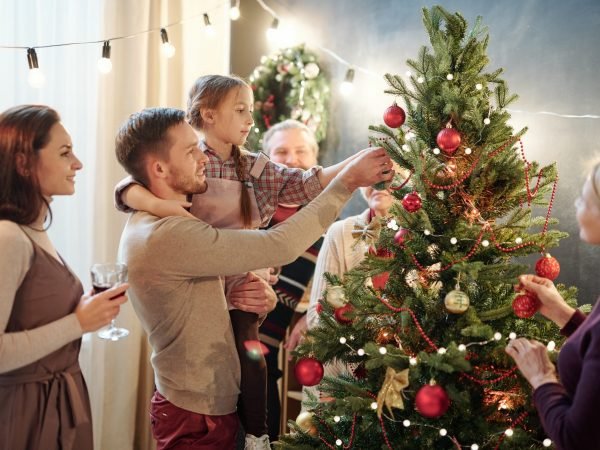

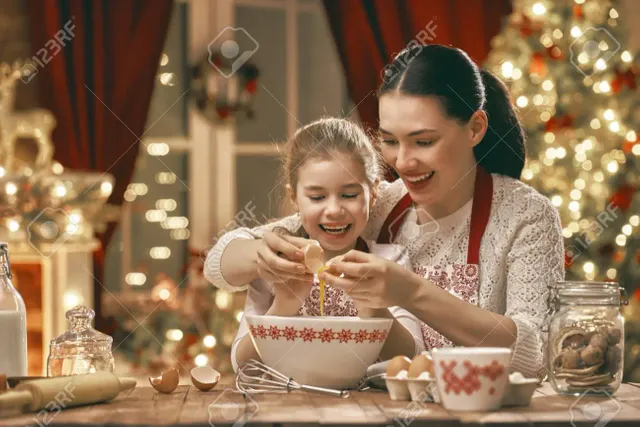
Christmas Day Celebration:
Christmas carols are played on radios and televisions to mark the day. Most families start by going to church, where performances and songs are done. Then later, they join their families to exchange gifts and celebrate with food and music. Happiness during Christmas is like no other.
Homemade traditional plum cakes, cupcakes, and muffins are the special treats on Christmas. Kids are showered with lots of presents and new dresses. They also get to meet the 'Santa Claus,' dressed in a fluffy red and white costume, who greets them with hugs and gifts.



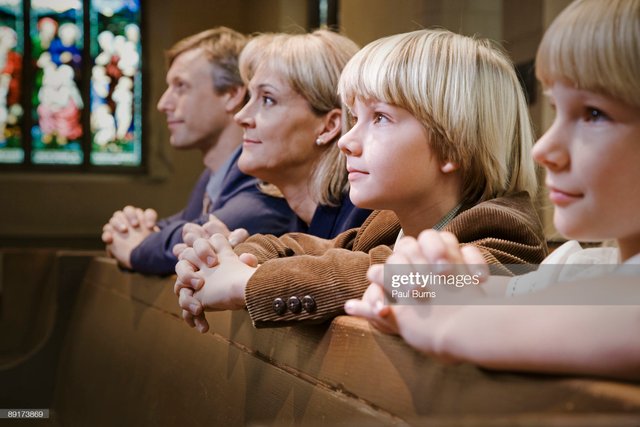
Christmas dinner:
Usually eaten in the middle of the day, Christmas Dinner is an important part of the family celebration. The food differs from country to country and also from family to family. In the Northern Hemisphere, roasted meat and vegetables are generally the main courses of the meal. Usually, one of several types of meat is served, including turkey, chicken, ham, roast beef, or lamb. There are often several courses, with special treats that are usually only eaten at Christmas.








.jpg)
Contemporary customs in Eastern and Oriental Orthodoxy
Eastern Orthodox churches honor Christmas on December 25. However, for those that continue to use the Julian calendar for their liturgical observances, this date corresponds to January 7 on the Gregorian calendar. The churches of the Oriental Orthodox communion celebrate Christmas variously. For example, in Armenia, the first country to adopt Christianity as its official religion, the church uses its calendar; the Armenian Apostolic Church honors January 6 as Christmas. In Ethiopia, where Christianity has had a home ever since the 4th century, the Ethiopian Orthodox Tewahedo Church celebrates Christmas on January 7. Most of the Syriac Orthodox Patriarchate of Antioch and All the East churches celebrate Christmas on December 25; at the Church of the Nativity in Bethlehem, however, the Syriac Orthodox celebrate Christmas on January 6 with the Armenian Apostolic Church. Congregations of the Coptic Orthodox Church of Alexandria follow the date of December 25 on the Julian calendar, which corresponds to Khiak 29 on the ancient Coptic calendar.
Contemporary customs in other areas:
With the spread of Christianity beyond Europe and North America, the celebration of Christmas was transferred to societies throughout the non-Western world. In many of these countries, Christians are not the majority population, and, therefore, the religious holiday has not become a cultural holiday. Christmas customs in these societies thus often echo Western traditions because the people were exposed to Christianity as a religion and cultural artifact of the West.
In South and Central America, unique religious and secular traditions mark the Christmas celebration. In Mexico, on days leading up to Christmas, the search of Mary and Joseph for a place to stay is reenacted, and children try to break a piñata filled with toys and candy. Christmas is a great summer festival in Brazil, including picnics, fireworks, and other festivities, as well as a solemn procession of priests to the church to celebrate midnight mass.
In some parts of India, the evergreen Christmas tree is replaced by the mango tree or the bamboo tree, and houses are decorated with mango leaves and paper stars. Christmas largely remains a Christian holiday and is otherwise not widely observed.
Japan serves as an illustration of a different sort. In that predominantly Shintō and Buddhist country, the secular aspects of the holiday—Christmas trees and decorations, even the singing of Christmas songs such as "Rudolph the Red-Nosed Reindeer" or "White Christmas"—are widely observed instead of the religious aspects.
.jpg)


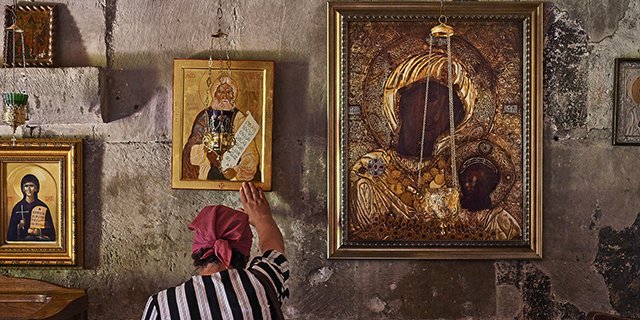
Conclusion:
Christmas reminds us of the importance of giving and sharing with friends and family. Through Christmas, we know that Jesus' birth is the beginning of great things in the world. It is generally an opportunity to think about nature and the reason for our existence. Christmas is such a festival that people from all religions and faiths celebrate worldwide despite being a Christian festival. It is the essence of this festival that unites the people so much.


Nice
Really good looking.